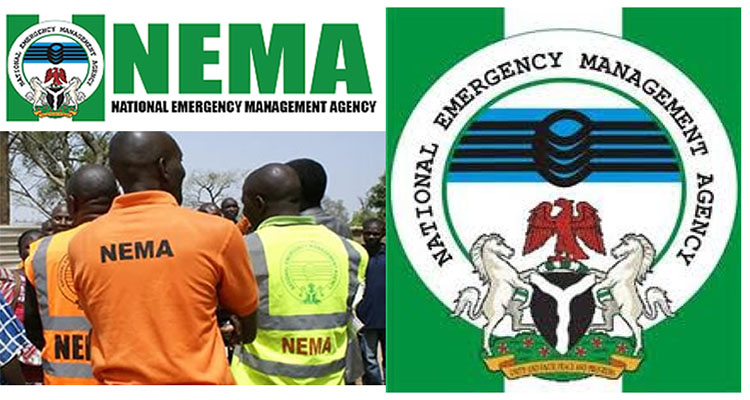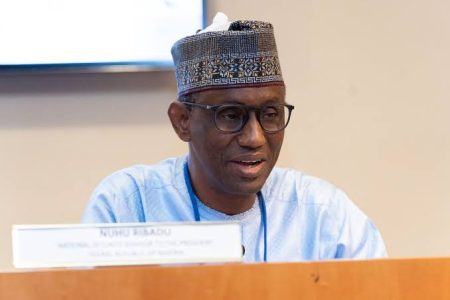The devastating windstorm that swept through several communities in Garba Chede, Bali Local Government Area of Taraba State on June 2, 2025, left a trail of destruction and displacement in its wake. The National Emergency Management Agency (NEMA) confirmed that over 1,800 individuals were displaced, their homes and livelihoods shattered by the violent winds that followed a heavy downpour. Communities including Anguwan Amare, Anguwan Hamidu, Anguwan Baki, and Sabon Layi in Kaigama Ward bore the brunt of the storm’s fury, with over 300 structures, including residential homes, a church, a school, and a hospital, either completely destroyed or severely damaged. This catastrophic event underscores the vulnerability of communities to extreme weather events and the urgent need for effective disaster preparedness and response mechanisms.
NEMA, in collaboration with the Taraba State Emergency Management Agency (SEMA), immediately launched a preliminary assessment of the affected areas to gauge the extent of the damage and determine the immediate needs of the displaced population. Ladan Ayuba, the Head of NEMA’s Yola Operations Office, emphasized the importance of a comprehensive assessment to guide the subsequent humanitarian intervention. The collaborative effort between federal and state emergency management agencies is crucial in ensuring a coordinated and effective response to the crisis, maximizing the impact of relief efforts and minimizing duplication of efforts. The rapid assessment aims to provide a clear picture of the devastation, enabling a targeted response that addresses the most pressing needs of the affected communities.
The North East Development Commission (NEDC), recognizing the scale of the disaster, pledged to rehabilitate all 300 affected households. A delegation from the NEDC visited the ravaged communities to conduct an on-the-spot assessment, witnessing firsthand the extent of the destruction. Hajia Batulu Isa, the Deputy Director of Relief and Mediation at the NEDC, assured the victims of the commission’s commitment to providing relief materials, including food, non-food items, and building materials, to cushion the impact of the storm. This pledge of support signifies the importance of inter-agency collaboration in disaster response, with different agencies contributing their specific expertise and resources to provide comprehensive assistance to affected populations.
While the official assessments focused on the physical damage and immediate needs, the human cost of the disaster was brought to light by the accounts of local leaders and survivors. Village head Hashimu Abdulkadir reported a grim toll of six fatalities and over 30 injuries, with the injured receiving treatment in various hospitals. The destruction of essential community infrastructure, including places of worship, a school, and a health center, further compounded the challenges faced by the affected communities. His plea to the Taraba State Government and representatives at both state and national levels highlights the need for a multi-pronged approach to disaster recovery, involving government support, community mobilization, and external aid.
The voices of the survivors paint a stark picture of the hardship and desperation in the aftermath of the storm. Zubaida Umar, a mother who narrowly escaped the disaster with her six children, described the dire situation faced by many residents, left homeless and stripped of their belongings. Her plea for food, shelter, and basic necessities reflects the urgent need for humanitarian assistance to address the immediate survival needs of the displaced population. The stories of survivors like Zubaida underscore the human dimension of the disaster, reminding us that behind the statistics are real individuals and families struggling to cope with loss and rebuild their lives.
The devastating windstorm in Garba Chede serves as a stark reminder of the vulnerability of communities to natural disasters and the importance of proactive measures to mitigate the impact of such events. The combined efforts of NEMA, SEMA, and the NEDC provide a glimmer of hope for the affected communities, demonstrating the power of collaborative action in disaster response. However, the long road to recovery requires sustained support from government agencies, non-governmental organizations, and the wider community to rebuild homes, restore livelihoods, and provide psychosocial support to those traumatized by the experience. The focus must shift from immediate relief to long-term rehabilitation and reconstruction, ensuring that the affected communities are not only able to recover from this disaster but also become more resilient to future threats. The incident underscores the need for investment in early warning systems, disaster preparedness programs, and community-based resilience building initiatives to minimize the impact of such events in the future.














